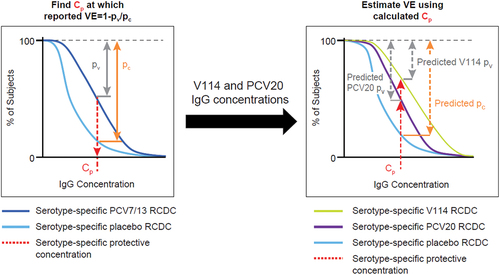Figures & data
Figure 1. Schematic depiction of the modeling method.

Table 1. Summary-level input data and sources.
Table 2. Estimated protective antibody concentrations.
Table 3. Observed and predicted vaccine effectiveness.
Figure 2. Absolute difference in predicted vaccine effectiveness for V114 and PCV20.

Table 4. Predicted effectiveness for serotype 3 using Andrews et al. (2014) PCV13 effectiveness estimates as input.
Supplemental Material
Download (15.6 KB)Data availability statement
The authors confirm that the data supporting the findings of this study are available within the article or its supplementary materials.
